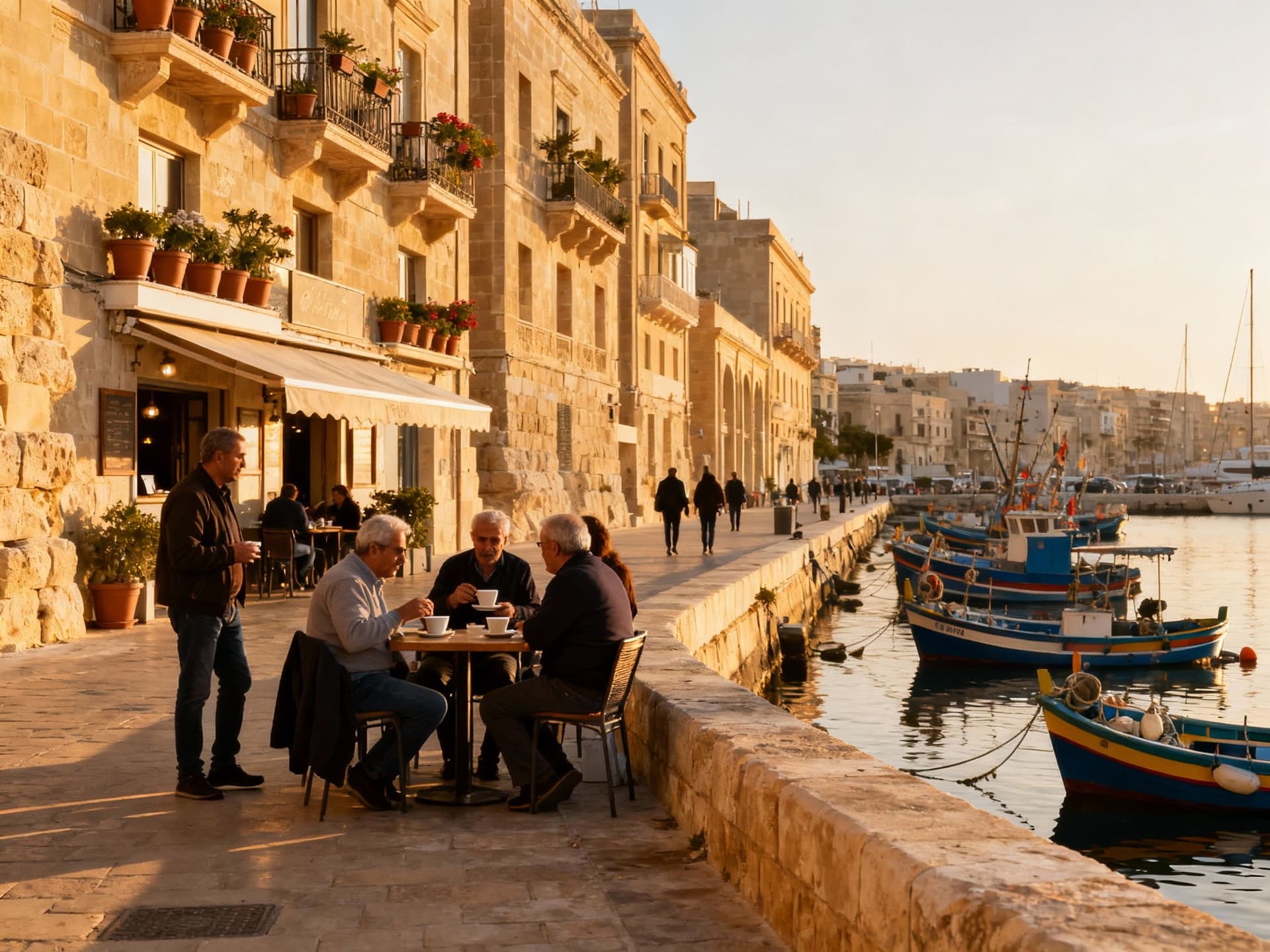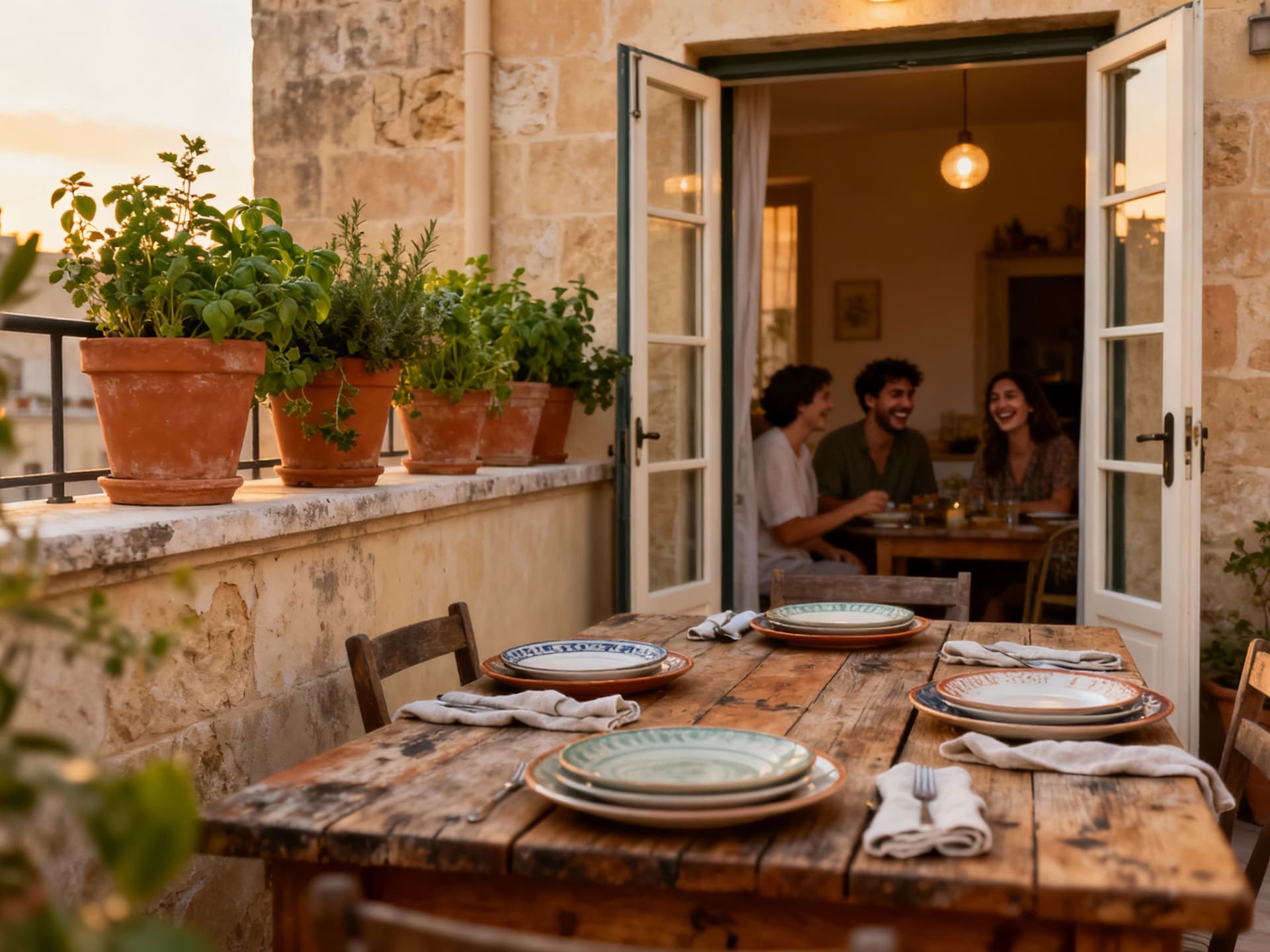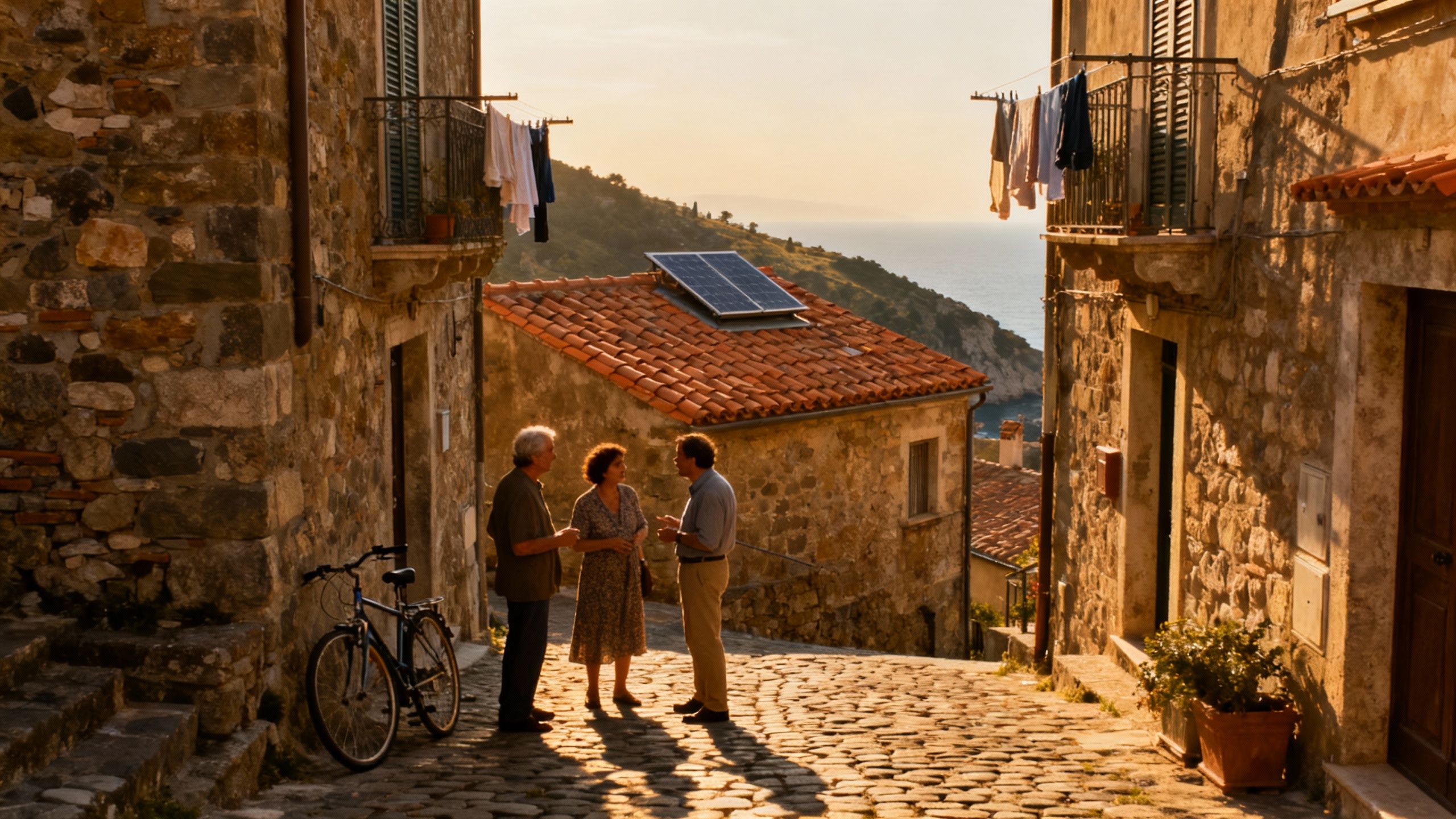Skip the Sea‑View: What Malta Sellers Oversell
Skip the sea‑view pitch: Malta buyers should prioritise stone, shade and small renewables—features that cut bills and deliver everyday joy amid rising prices.
Imagine stepping out at dawn to buy a cannoli in Mdina, the limestone alleys still cool underfoot, then catching the ferry to Gozo for an afternoon swim in Xlendi. Malta tastes like sea salt and slow coffee; it moves in quick bursts—frenetic harbours, sleepy village festas, and a small‑island intimacy that folds neighbours into family. But when agents lean hard on “sea view” and rooftop terraces, they’re selling a fantasy that can distract from what truly makes a Maltese home regenerative, comfortable and resilient.
Living Malta: texture, rhythm and real green living

Malta’s daily life is tactile: sun‑warmed stone, balconies filled with potted herbs, and narrow streets where espresso and conversation are the morning’s pulse. The archipelago is small enough that sustainable systems—rooftop solar, water conservation, and community recycling—matter at a household level, and national policy supports energy efficiency and local projects that affect how you live at home and in the neighbourhood.
Valletta, Sliema and Mdina: different hearts of the island
Valletta hums with history—baroque facades, balcony chatter and a cultural calendar that fills evenings with theatre and small concerts. Sliema and St Julian’s feel younger and busier: promenades, cafés (try Jubilee or Caffè Berry), and apartments stacked with sea views. Mdina and Rabat trade bustle for hush: pathways for walking, terraces that watch decades rather than days. Each pocket offers a different relationship to light, breeze and community gardening potential—important when thinking about passive cooling and low‑impact outdoor living.
Food, markets and the rhythm of seasons
Weekends in Malta revolve around fresh fish from Marsaxlokk, fruit stalls bursting with citrus, and neighbourhood bakeries where hobż biż-żejt (bread with oil) is a ritual. Seasonal festivals—village festas, summer band marches and harvest events—shape the social calendar and create micro‑markets for local producers. For buyers who value a farm‑to‑table life, look for homes with compact terraces or community garden access rather than a marketed sea view that won’t feed you.
- Lifestyle highlights to look for when house‑hunting in Malta
- Morning espresso on the Sliema promenade (Caffè Jubilee or independent roasters)
- Sunday fish market in Marsaxlokk and seaside suppers at family tavernas
- Quiet evenings in Mdina with rooftop stargazing and cool stone walls
- Community beach clean‑ups and local sustainability groups that turn neighbours into stewards
Making the move: practical choices that shape daily life

Your lifestyle dreams must meet market reality. Malta’s Residential Property Price Index climbed steadily through 2024–2025, reflecting city‑wide pressure on apartments and maisonettes. That matters when you weigh a flashy sea‑view penthouse against a more modest home with solar potential, water harvesting and a sheltered terrace that lowers bills and deepens daily comfort.
Property types: what sells the dream vs what delivers daily value
Developers will often promote roof terraces and panoramic balconies as the ultimate Maltese lifestyle. In truth, a compact maisonette with a shaded courtyard, thick limestone walls and good cross‑ventilation will keep you cooler in August, cost less to run, and integrate better with local life. If sustainability and long‑term comfort matter, prioritise materials, orientation and outdoor living that supports food growing and passive cooling.
Working with local experts who know the island’s ecology
Choose an agent who speaks both the language of lifestyle and the language of sustainability—someone who can identify a south‑facing façade for optimal solar panels, advise on rainwater capture where permitted, and connect you with local craftsmen who repair traditional timber balconies instead of replacing them with plastics. The Energy & Water Agency offers guidance on national programmes and incentives that savvy buyers can use to reduce bills and increase resilience.
- Steps to blend lifestyle and practical buying in Malta
- List what truly matters daily (cool nights, access to markets, terrace for plants) rather than views alone.
- Ask agents for energy performance, orientation, and historical construction materials—stone walls beat glazed façades for summer comfort.
- Budget for modest retrofits: shading, rooftop photovoltaic readiness, and small cistern systems to make a property self‑reliant.
- Visit across seasons: sample July’s heat, March’s spring markets and November’s quiet streets to feel the year‑round rhythm.
Insider knowledge: what expats wish they'd known
Expat conversation often starts with sea views and ends with practicalities—noise in St Julian’s late at night, tricky parking in Sliema, and summer humidity in low‑insulation flats. The data shows prices rose 5% year‑on‑year into 2024, and continued momentum in 2025 suggests being tactical about timing. Buyers who toured in shoulder seasons found better availability and clearer perspectives on how a home lives in October versus August.
Cultural integration and day‑to‑day social life
English is an official language, which eases daily integration for many internationals, but Maltese social life is local and layered: family feasts, close‑knit village networks, and respectful rhythms around festas and church calendars. Showing curiosity—learning a few Maltese phrases, attending a festa, joining a beach clean or community garden—opens doors that contracts and viewings cannot.
Long‑term lifestyle value: stewardship over spectacle
Homes that age well are quieter investments than showy penthouses. Thick stone, shaded courtyards, and a capacity for small‑scale renewable upgrades maintain comfort and value. With the market’s steady rise documented by the NSO, thoughtful buyers prioritise longevity and low operational cost—features that both honour local craft and pay dividends when returns matter.
- Red flags sellers push as 'must‑have' features
- Overpriced sea‑view premium on a noisy, south‑facing apartment without shading
- Newly glazed terraces that increase heat load instead of offering passive cooling
- Claims of 'low maintenance' for properties that require imported materials and frequent repairs
If a listing leans heavily on sunset shots and rooftop parties but skims details like insulation, orientation, and water supply, treat that as a cue to probe deeper. Ask sellers for energy performance details, local council permissions for retrofits, and whether neighbours use rooftop spaces collaboratively—these answers reveal how a property will feel long after the brochure photograph fades.
- A short due‑diligence sequence to protect lifestyle value
- Visit the property at different times (morning, midday, evening) to test light, wind and noise.
- Request recent energy bills and any past renovation invoices—check for non‑local materials that raise upkeep costs.
- Confirm council rules on rooftop PV, cisterns and balcony repairs with a local agent or the Energy & Water Agency.
- Speak with neighbours or local shopkeepers about microclimate (wind, shade), community life and parking realities.
Conclusion: fall in love with everyday life, then secure it with practical choices. In Malta, the true luxury is a home that breathes with the island—cool in summer, sheltered in winter, connected to markets and neighbours, and ready for small renewable upgrades. Work with a local, sustainability‑minded agent who can translate the island’s texture into a realistic buying plan; skip the headline sea‑view premium unless it genuinely supports your daily life.
British expat who traded Manchester for Mallorca in 2017. Specializes in guiding UK buyers to luxury Spanish estates with clear navigation of visas and tax.


